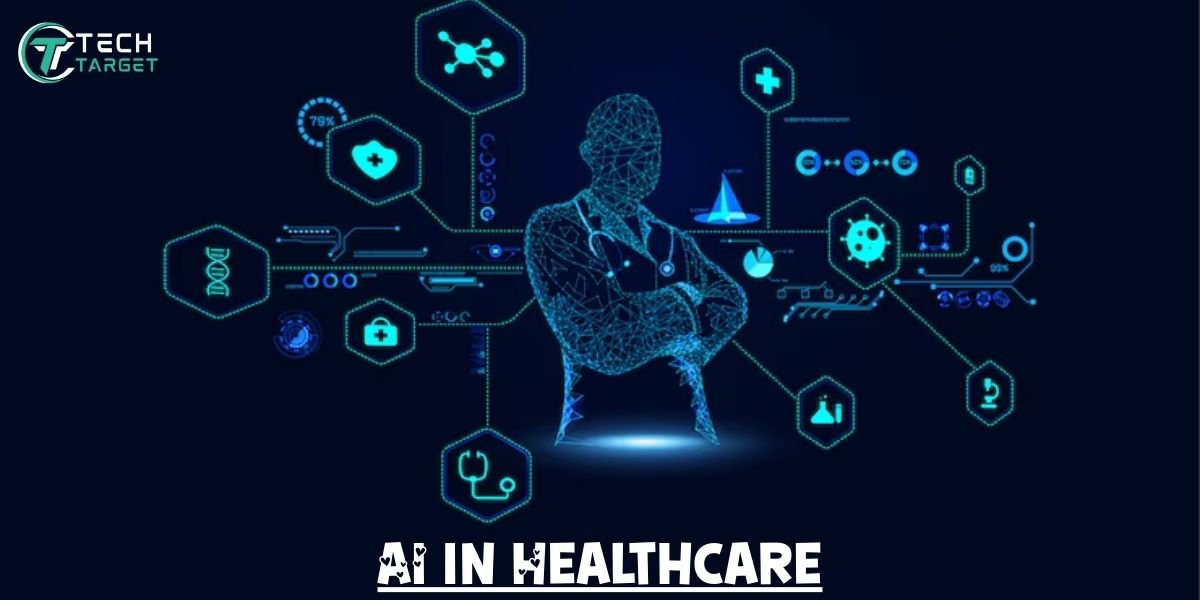AI is revolutionizing industries with intelligent algorithms and super-fast response times. It is overtaking the tech sector, with modern firms shifting towards AI-powered development and cloud solutions. Now, AI is moving towards cybersecurity solutions, helping IT firms in a number of ways, from detecting loopholes to preventing cyberattacks. It adds an extra layer of protection, enabling businesses to invest more in AI solutions for IT. The market value for AI specifically for cybersecurity solutions is increasing and was recorded at $31 billion in 2024. Moreover, at the same growth rate, the AI in the cybersecurity market will cross $134 by the end of 2030. These figures indicate the revolutionary importance of AI in a critical IT field.
This write-up will discuss the continuous adoption of AI in cybersecurity and will answer most of the key questions in terms of cyberattacks, safety, benefits of AI, and the building technology that makes automation possible in IT infrastructure and development.
Preventing Cyberattacks with AI – A Feasible Approach?
What is the main concern of cybersecurity teams? Definitely, it is the prevention of cyberattacks and online breaches. Every business IT team has a dedicated department that solely focuses on cyber threats and attempts. So, how does the AI approach go in this regard? AI in cybersecurity has its own pros and cons, however, if the model is trained well, with clean and accurate data, it can reinforce cyber intelligence significantly. This can enable security professionals to identify and categorize cyberattacks, strengthen their defenses further, and analyze prevailing threats better. For instance, AI can allow security officers to recognize specific typing styles, voices, and fingerprints to accurately authenticate users. Moreover, it can provide critical insights based on previous cyberattack data that enable the firms to identify their loopholes and fix them at the earliest.
AI Automation and Cybersecurity – Practical Explanation
Automation is the main role of AI, as it significantly reduces the human load by automating tasks such as system monitoring (which requires a dedicated professional 24/7 to ensure smooth network operations), load management on servers, and resource optimization. While automation increases business security intelligence and saves time, it does require human intervention to ensure that AI solutions don’t do anything that breaks down the network. However, with advancements and improvements, AI is becoming reliable and safe in controlled environments and provides significant benefits. Practically, firms can implement AI across 3 key cybersecurity operations, such as:
Threat Detection
AI Software can assist in the first stage of any cybersecurity defense, which is the detection of threats. It can look for smaller changes in the network, which most of the time go unnoticed in traditional security systems. AI identifies threats like changes across the network communication protocols and accessible assets like devices and application servers. AI in cybersecurity solutions uses machine learning pattern recognition to analyze large packets of data exchanged across a network. Upon spotting any unusual activity across any network in the business IT infrastructure, the system alerts the cybersecurity professionals to promptly respond to these changes, as they can indicate a digital attack. Moreover, AI can help flag possible loopholes in the system that can be improved in the future.
Swift Management & Control
Detection is the first phase of modern cybersecurity solutions where AI excels. Now, once the threat is detected and the team is looking for prompt actions. AI can help businesses by suggesting possible vulnerability fixes, such as implementing firewalls and closing the networks that can have a potential impact on the system. This streamlines the critical process of threat control and enables businesses to save their most important resources first. Moreover, it can allow the professionals to apply swift patches and manage the threat in real-time. Cybersecurity professionals can then restrict access, fix network devices, and implement firewalls to thwart the attacks.
Threat Response & Recovery
AI in cybersecurity has impacts on recovery and response as mentioned above. In addition, machine learning-powered cybersecurity solutions automate different aspects of response by automatically closing ports down and blocking networks that can bring malicious traffic. Moreover, if the attackers manage to breach a network successfully, AI can isolate the affected systems to prevent further access by hackers. It quickly generates the incident reports for the cybersecurity teams to analyze and encrypt the data available on the systems for safety and control. This ability of AI in adapting and controlling the affected devices proves to be a valuable tool in the emerging cybersecurity landscape.
The Benefits of AI in Cybersecurity – Other than Technical Advantages
AI in cybersecurity can help in the automation of attack detection, control, and recovery. Other than these major applications, AI solutions provide several other benefits, such as:
- Cost Efficiency: Cybersecurity firms need to have complete IT teams that are available 24/7 and are equipped with technical expertise. Other than the technical side of things, cybersecurity professionals need a data collection workforce which can be slow and cost inefficient. Pairing these solutions with AI allows firms to collect data quickly and make incident management dynamic and cost-effective. AI also mitigates the manual work for security professionals, primarily monitoring network traffic, so they can focus more on other strategic solutions. This significantly improves the cost efficiency of the workforce.
- Minimal Risk of Errors: Human errors can occur but they can lead to vulnerabilities in the security systems. For instance, a wrong or outdated configuration of a network can lead to weakness and become the cause of cyberattacks. AI can help in removing human errors, making the systems more efficient. Additionally, the human resource can be reallocated to other core tasks that require attention.
- Improved Decision Making: As you know that AI processes large-scale data and derives results from it. This ability of automation can help cybersecurity firms identify and correct any vulnerabilities and make informed decisions. Moreover, the AI report generation allows them to analyze valuable insights from the previous attacking attempts. This allows cybersecurity professionals to formalize procedures and secure the IT infrastructure intelligently.
It is important to mention here that cybercriminals change their methods and adapt to new tools, as they also have access to AI. So, it is necessary to implement essential cybersecurity measures with human expertise and skill to prevent modern ways of attacks. This way, businesses can counter AI-enhanced attacks and secure their networks.
Key Technologies that Build AI for Cybersecurity Solutions
Artificial intelligence in cybersecurity uses three key technologies to create most of the intelligent features. These include machine learning, generative AI, and neural networks that enable deep learning models.
Machine Learning (ML)
Machine learning is the backbone of most AI solutions as it enables systems to learn automatically without explicit commands from IT professionals. ML allows intelligent response and recovery to cyberattacks and analyzes patterns of hackers and their interactions. Typically, UEBA (User & Entity Behavior Analytics) is a primary AI application interface that performs flagging of unusual logins and all sorts of anomalies in the user behavior patterns. Machine learning allows faster responses and identifies attacks before they escalate.
Deep Learning
Deep learning is a subset of machine learning that allows more complex data analysis on a deep level by interconnecting its roots and sources. It performs tracing of network packets and is highly effective for detecting advanced cybersecurity threats. Deep learning is used in countering polymorphic malware (which replicates and constantly randomizes code to avoid detection).
Neural Networks
Neural network technology is just like a human brain, as it contains nodes to process data intelligently, like humans would do. Each node has a unique characteristic and evaluates inputs to improve accuracy. The final outcomes come from this evaluation. Neural networks play a significant role in evaluating firewall logs and configuration patches that help IT experts identify patterns to predict potential threats.
Large Language Models (LLMs)
LLMs (Large Language Models) are trending across the modern tech news after the rise of chatbots such as ChatGPT and DeepSeek. The AI model GPT-4 is a significant step towards text-based AI and can have a big impact on cybersecurity solutions. It can improve and enhance security responses by providing detailed information by sifting through large amounts of data, such as logs, firewall detections, and other key technical aspects. Moreover, LLMs are intelligent enough to thwart phishing-like cyberattacks and generate human-readable security responses automatically.
About TechTarget.ai – Shaping the Future of Technology
At TechTarget.ai, we’re more than just a platform for the latest in technology news. We are a hub for thought leadership, built on the foundation of deep research, strategic analysis, and a vision for how the digital world is evolving. Our focus is on unlocking the complexities of technology and making these innovations not only understandable but actionable for businesses and tech enthusiasts alike.
Our team consists of industry-leading experts who dive into emerging technologies with a critical, data-driven mindset. Every article, post, and insight shared on our platform is backed by rigorous research, ensuring that what we offer is not just timely, but relevant and impactful.
What makes TechTarget.ai different is our ability to look beyond the surface. We go past trends and hype, exploring the real-world implications of these technologies. We aim to bridge the gap between theory and application, ensuring that our readers not only understand what’s next but also how they can prepare for it.
Whether it’s the complexity of AI, the transformative power of automation, or the cutting-edge shifts in cybersecurity, we’re here to provide you with not just knowledge, but perspective. Our approach combines scientific insights with practical understanding, so that you can engage meaningfully with the fast-changing landscape of technology.
Want to see how AI is being used in other areas? Check out these related reads:
| AI in FinTech – Understanding the Impact of AI Innovation on the Modern Financial Sector | How to Implement AI in Customer Service: A Practical Guide |
| AI in Retail – Top 5 Game-Changing Use Cases Everyone Needs to Know | Understanding the Business Impact of AI in Manufacturing – A Practical Guide |
At TechTarget.ai, we don’t just predict the future — we help shape it. We are constantly evolving, exploring new ideas, and pushing the boundaries of what’s possible. Our content is designed not just to inform but to spark innovation and critical thinking. At the end of the day, technology is more than just tools — it’s about realizing their full potential.
The Bottom Line
AI has become a core technology in the modern IT infrastructure and is increasing across cybersecurity solutions. It helps the network assistants and core professionals counter prevailing threats like phishing, smishing, and other enterprise-level attempts. In a nutshell, AI in cybersecurity is continually improving with advancements in technology and will become a crucial component of upcoming software solutions. However, human intelligence is always necessary to supervise AI responses and control the IT infrastructure. Firms should implement AI to increase the efficiency of their systems as it processes data faster, reducing costs, time-consumption, and workforce burden.










